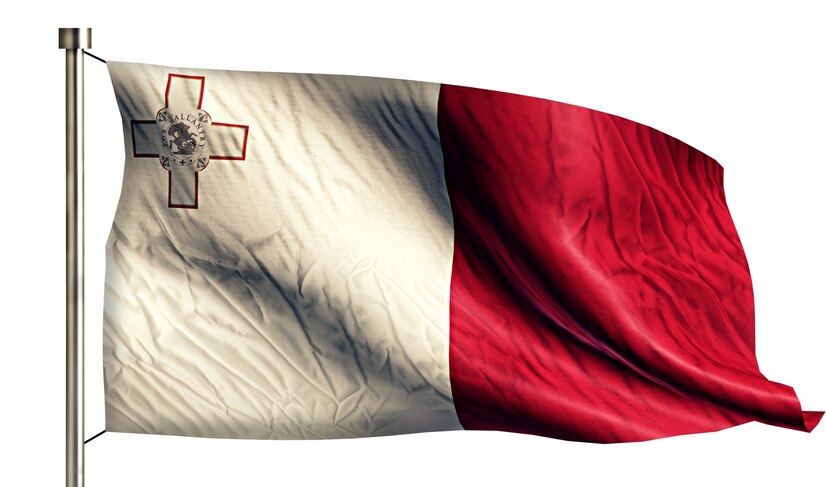The Malta flag is not just a piece of cloth fluttering in the wind; it is a vibrant emblem steeped in history and cultural significance. Malta, an island nation located in the Mediterranean Sea, boasts a flag that represents its rich heritage and unique identity. This article will explore the origins, symbolism, and significance of the Malta fla’g while offering insights into its place in Maltese society today.
Historical Background of the Malta Flag
The Malta flag’s history is as rich as the island’s past. The flag features two vertical bands of white and red, with the George Cross emblazoned in the upper hoist corner. The colors of the flag reflect Malta’s historical ties to both the Knights of St. John and the British Empire.
The Knights of St. John
The Knights of St. John, also known as the Knights Hospitaller, played a pivotal role in Maltese history. Arriving in Malta in 1530, they established a sovereign order that defended the island against numerous sieges, particularly from the Ottoman Empire. The white and red colors of the flag are derived from the colors of the Knights’ banner, symbolizing bravery, valor, and sacrifice.
British Influence
Malta’s strategic location in the Mediterranean made it an essential naval base for the British Empire. The island became a British colony in 1814 and retained this status until gaining independence in 1964. The George Cross, awarded to the Maltese people by King George VI in 1942 for their bravery during World War II, is a significant symbol on the flag, representing Malta’s resilience and courage during challenging times.
Description of the Malta Flag
The Malta flag consists of two vertical bands, with the left side white and the right side red. The George Cross is positioned in the upper hoist corner, which consists of a white cross with a red border. This cross holds a prominent place in the hearts of Maltese citizens, symbolizing their struggle and triumph over adversity.
Colors of the Flag
The colors of the Malta flag have distinct meanings:
- White: Represents peace and purity. It signifies the hope for a brighter future and the resilience of the Maltese people.
- Red: Symbolizes courage and bravery. It reflects the sacrifices made by those who fought to protect the island and its people.
- George Cross: A medal awarded for bravery, it epitomizes the strength and determination of the Maltese during wartime.
Cultural Significance of the Malta Flag
The Malta fla’g holds immense cultural significance for the Maltese people. It is a source of national pride and unity, representing the collective identity of the nation. Whether during national celebrations or sporting events, the Malta fla’g is prominently displayed, evoking a sense of belonging among citizens.
National Holidays and Celebrations
The Malta flag takes center stage during national holidays, especially on Independence Day (September 21) and Republic Day (December 13). These occasions see vibrant parades, fireworks, and festivities, where citizens come together to celebrate their nation’s history and achievements, proudly waving the flag as a symbol of their identity.
The Flag in Everyday Life
Beyond national celebrations, the Malta fla’g is present in various aspects of daily life. It is commonly seen in homes, businesses, and public spaces, serving as a reminder of the nation’s rich heritage and shared values. The flag is often incorporated into artworks, crafts, and souvenirs, further embedding it in the cultural fabric of Malta.
The Malta Flag in Modern Times
In contemporary Malta, the flag continues to symbolize national pride and unity. It serves as a reminder of the country’s past struggles and triumphs while embodying the hopes and aspirations of its citizens. The Malta flag also plays a crucial role in diplomatic relations, representing the nation on the international stage.
International Recognition
The Malta fla’g is recognized worldwide and is often seen at international events, including the United Nations and the European Union. The flag represents Malta’s commitment to global cooperation and peace, reflecting the values of the Maltese people.
Flag Etiquette
Maltese citizens take great care in displaying their flag. There are specific guidelines on how to treat the flag with respect. For example, it should not touch the ground, and when displayed alongside other flags, it should be given the place of honor. This respect for the flag underscores its importance in Maltese culture.
Conclusion
The Malta flag is more than a mere emblem; it embodies the spirit and identity of the Maltese people. With its rich history, vibrant colors, and significant symbols, the flag represents a nation that has endured challenges and emerged resilient. As Malta continues to evolve, its flag remains a steadfast reminder of its heritage and cultural pride, uniting citizens in their shared identity.
FAQs about the Malta Flag
What are the colors of the Malta flag, and what do they represent?
The Malta flag features two colors: white and red. The white symbolizes peace and purity, while the red signifies courage and bravery. The George Cross represents the resilience of the Maltese people.
When was the Malta fla’g officially adopted?
The current design of the Malta fla’g was officially adopted on September 21, 1964, coinciding with Malta’s independence from British rule.
What is the George Cross on the Malta fla’g?
The George Cross is a medal awarded to the Maltese people by King George VI in 1942 for their bravery during World War II. It is a significant symbol on the Malta flag, representing the courage and strength of the nation.
Why is the Malta fla’g important to the Maltese people?
The Malta fla’g is a source of national pride and identity for the Maltese people. It symbolizes their history, struggles, and triumphs, uniting citizens during national celebrations and everyday life.
How is the Malta flag displayed during national holidays?
During national holidays, the Malta flag is prominently displayed in parades, public gatherings, and private homes. It is a symbol of unity and pride, evoking a sense of belonging among citizens.







